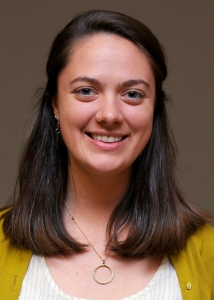 By Emilie Bouvier
By Emilie Bouvier
Several months worth of large-sheet calendar pages decorate my office wall; if you’ve been by, you’ve seen them. I like how the sheets motivate me to plan ahead and see the momentum that we build through organizing across the weeks and months. But I’ll admit, when I ripped off the calendar month of April and wrote “Earth Day” in large letters in the box with the number 22, I let out a deep sigh.
“Our dedication to earth care must be more than an activity fair or stacks of flyers and brochures on ‘how to go green’ that end up in the recycle bin (oh the irony) mere days later.”
Don’t get me wrong, I’m inspired by the history of Earth Day, and recognize the important place it’s had in the environmental movement. The Earth Day Network shares a compelling history of the day, recognizing that in 1970, when the celebration of Earth Day began, “Americans were slurping leaded gas through massive V8 sedans. Industry belched out smoke and sludge with little fear of legal consequences or bad press. Air pollution was commonly accepted as the smell of prosperity. ‘Environment’ was a word that appeared more often in spelling bees than on the evening news.”
How far we’ve come! Yet, there’s still so much work to do. And I more often see Earth Day as a way to decorate calendars than an opportunity to join the swelling numbers of the protests and calls to action that marked the first Earth Day of 1970. Our dedication to earth care must be more than an activity fair or stacks of flyers and brochures on “how to go green” that end up in the recycle bin (oh the irony) mere days later.
WHAT IF PROGRAMMING around Earth Day was less about a box to check off than an opportunity to identify and engage new leaders within congregations who care about environmental stewardship? How might our worship, forums, or after-worship-tabling resist the norm of a “one-off” theme and instead lead a church toward the next step in earth-keeping – something that perhaps the pastors or green team have been dreaming of but need some support or buy-in from the congregation in order to move forward?
Yet even if we use Earth Day well, our efforts ought to overflow and upset our calendaring-as-usual. We so love our commemorations and programming routines that we create a calendar rhythm that tells us exactly what to celebrate and talk about when. We could learn a lesson from our liturgical calendar, which even amidst its cycles and seasons harbors something unique: When we do it right, the incarnation and resurrection inherently break open the whole cycle.
“We could learn a lesson from our liturgical calendar, which even amidst its cycles and seasons harbors something unique: When we do it right, the incarnation and resurrection inherently break open the whole cycle.”
I so love when our creation justice reflects this incarnational and unexpected-power-upending reality of Christ. We do this when we show up at hearings or protests – whether it’s at City Council or the Standing Rock Reservation – because that’s where our voice is needed in a particular and critical moment, regardless of what day it is. We do this when we practice environmental concern in our worship and learning at surprising or unusual times.
I think of the beautiful “Gather at the River” gathering, when 25 of us celebrated and learned about water in December of all times – but it was just in time to talk about the impacts of road salt on water quality before the winter storms, and to take in the beauty of the flickering lights from downtown shimmering off the Mississippi River as we lit candles in Advent and prepared for the birth of Jesus.
It’s a simple practice, really. Just ask “What’s next?,” What do we need?,” and “What can we do?” in discerning how to take action for the sake of all creation — and then put it on the calendar.

